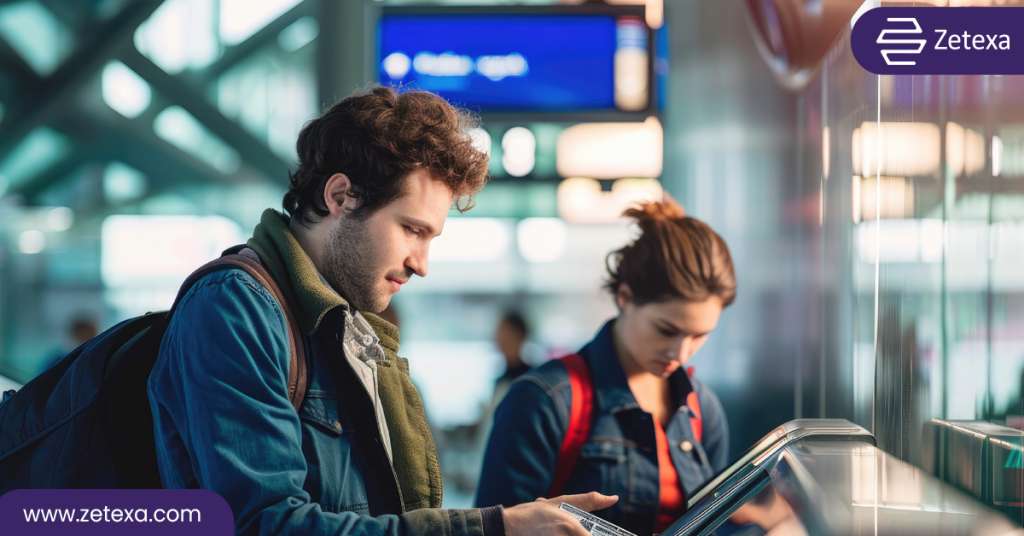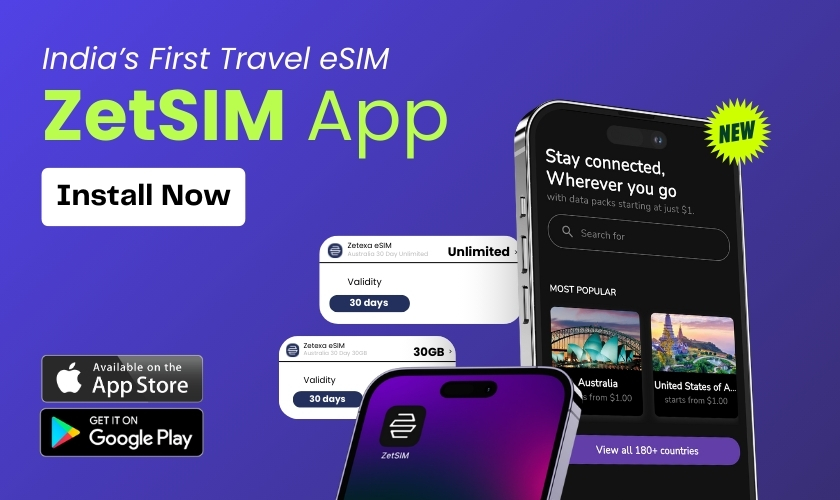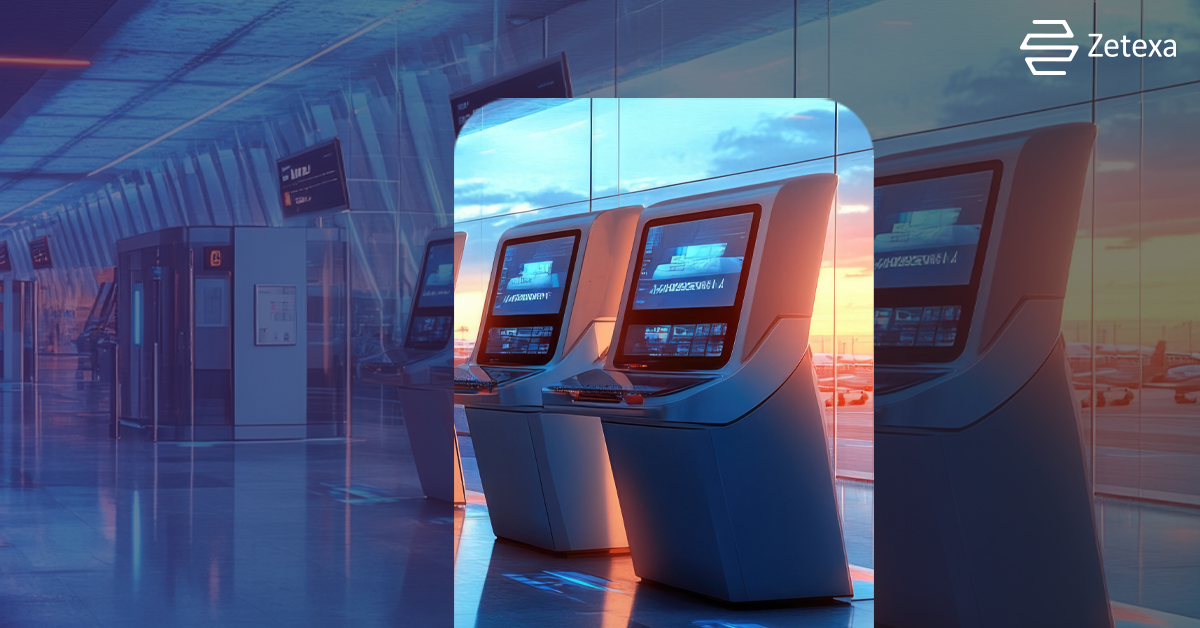The passenger-airport relationship is usually a transient one. Building long-lasting relationships and obtaining the kind of information required to improve the customer experience has long been a problem, given the hundreds of thousands of individuals who pass through each day.
Airports need to go beyond conventional touch points like parking and departure lounge retail stores to effectively engage with passengers. Instead, they need to come up with innovative ways to get to know them better and provide a worthwhile, customized experience. And this is the use case for eSIM services.
The Evolution of Connectivity in Airports
Airport connectivity has traditionally been slow and problematic. For passengers, what should be a good start to their journey becomes an annoying drill of endless queues at check-in desks and patchy Wi-Fi. New technologies, however, are flipping this passenger experience around as the aviation sector undertakes a digital transformation. On top of the new tools of connectivity management, eSIM technology offers a more secure, adaptable, and seamless experience.
Rebuilding Loyalty Through Problem-Solving
Solving problems is the surest route to happy customers, so eSIM is making headway in its battle for loyalty for travel companies. With eSIM, the use of local SIM cards, which are inconvenient to handle, and very unreliable connections with inflated data roaming costs, which all just tend to ruin holidays, will be no more. For example, Zetexa’s eSIM is currently providing its services to airports, offering passengers fast, reliable, affordable data and, at the same time, gathering insightful data to customize the experience and place other beneficial offers.
Thanks to this technology-driven new travel experience, it is now possible for airports to collect data in a way previously unimagined. Their new ability to guide and engage with the customer through the multiple touch points that exist allows them to shift their relationship from transactional to meaningful and long-term. This has also brought considerable increases in ancillary revenue.
The Significance of Loyal Customers
A key requirement for the travel sector is customer loyalty. According to studies, organizations that can exhibit true customer intimacy continuously create stronger revenue growth than their competitors, and existing customers spend 31% more on average than new ones. Travel brands have a new option to get to do just that: by creating their own eSIM proposition.
Airports and other travel providers can initiate talk that lasts long after the vacation ends
by providing dependable internet access to their patrons wherever they go. In terms of consumer happiness, this is unquestionably successful. In addition, it provides insightful data that can be utilized to boost output and guide future marketing initiatives.

Streamlined Check-In and Security Processes
The general experience of all of us, more so while visiting an airport, is one of long waits and lines. Nevertheless, such bottlenecks can be considerably reduced with the help of eSIM technology. This would mean that by integrating eSIM technology into the airport systems, real-time notifications regarding everything from flight status and gate changes to security updates go directly to the mobile devices of travelers. According to the International Air Transport Association (IATA), passenger stress levels decreased by 15 percent in those airports that utilized digital notifications.
Another characteristic of eSIM is that it can facilitate the check-in process by enabling travelers to check in on their mobile devices. This quickens the process and minimizes in-person interaction. From this view, research on the subject matter by ACI has established that the incorporation of eSIM technology with self-service check-in kiosks increased check-in efficiency by 20%.
Crafting Customized Experiences
Airports can now access data that they were previously unable to obtain, such as the destinations and departure times of passengers passing through their gates. This creates a plethora of chances to identify and cultivate regular travelers, delivering personalized recommendations and exclusive offers directly to their fingertips.
Although data collecting can be challenging, this isn’t about monitoring clients. Customers are the first to learn about the details and advantages that are important to them in this mutually beneficial, cooperative connection, while airports may enhance their brand and fully utilize all available products and services.
In this way, one will be able to provide eSIM users with personalized suggestions on top-up deals related to data consumption, upcoming events, retail discounts in their area, and many other useful content items based on their preferences and behaviors.
Now, suppose a customer goes frequently to Tenerife. Airports can use this newly acquired travel data to notify travelers about future special deals on flights to that area. Others who frequently take two-day trips to Europe may be interested in learning about short-term valet parking possibilities at the airport, whereas others who prefer longer visits—perhaps a week or two—might be more interested in learning about long-term options.
Customers want to feel as though businesses are especially attending to their own unique demands, which makes personalization more vital than ever. Most airports could only dream of providing the kind of individualized experiences that modern travelers want. However, eSIM enables them to provide a little magic that draws customers in by enabling them to give real-time updates, deals, travel advice, customized newsletters, and much more.

Case Studies: Airports Leading the Way
Singapore Changi Airport
Singapore Changi Airport has made a name for itself by taking a fresh approach to how passengers experience their time there. They’ve brought eSIM technology into the mix to make things run more. The airport’s phone app uses eSIM to connect to the services that it offers. It informs travelers of updates immediately and gives tips and a fast connection to the use of services; for instance, a 2023 survey showed how good an app could be. It reported that 85% of travelers using the app had their travel experiences improved by what the app was presently capable of.
Dubai International Airport
In enhancing customer satisfaction, Dubai International Airport has adopted the use of eSIM technology. Through the use of eSIM technology, it has enabled visitors to enjoy high-speed internet without changing SIM cards; this increased consumer satisfaction in Wi-Fi services by 30%. Moreover, eSIM data has been used to rationalize operational and service offers.
London Heathrow Airport
eSIM technology has been put into place at London Heathrow Airport to automate most of its operations in order to provide the best customer service. This kind of integration facilitated easier and faster handling of passenger data by offering faster check-in procedures and better security measures within the whole area of the airport. According to Heathrow Airport, with the implementation of the eSIM technology, the average waiting time at security checkpoints was reduced by 10%.
Conclusion
Top airports around the world are already reaping real benefits from eSIM technology, including data-driven decision-making at an enhanced rate, speedy check-ins, and improvement of network performance. With these developments, forward-looking airfields are moving to the very pinnacle of their sector, improving passenger happiness and operational performance.
Looking ahead, keeping pace with the incredible rate of technical development becomes an important competitive factor in the aviation market. With eSIM technology, airports will be more efficient and improve the customer experience, gaining a distinct advantage in developing their service offerings for passengers and visitors. eSIM is driving the future of airlines.
Future-proof your investment in eSIM to bring about a new age in the art of traveling and transform your airport into a shining beacon of excellence and efficiency in today’s modern world.
To know more about how eSIM can help you get to know your customers better, get in touch with the experts at Zetexa today.

Download ZetSIM App from the APP Store
Download ZetSIM App from the Google Play Store
FAQs
eSIM enables airports to gather real-time data about passengers’ mobile usage, helping them understand customer preferences and improve personalized services.
Yes! Passengers can enjoy uninterrupted mobile service throughout the airport, allowing them to access information, entertainment, and services seamlessly.
Airports can analyze mobile usage patterns to optimize services like Wi-Fi, lounges, and customer support, enhancing operational efficiency and improving the customer experience.
eSIMs offer secure, encrypted connections, ensuring that passengers’ data remains safe while they use mobile services at the airport.
Zetexa eSIM provides real-time data tracking, secure connectivity, and easy integration, enabling airports to enhance the passenger experience and gain valuable insights.



